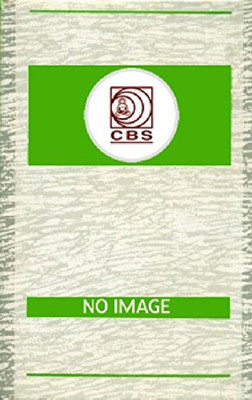Pharmaceutical Biotechnology(English, Paperback, Walsh Gary)
Quick Overview
Product Price Comparison
Pharmaceutical Biotechnology offers students taking Pharmacy and related Medical and Pharmaceutical courses a comprehensive introduction to the fast-moving area of biopharmaceuticals. With a particular focus on the subject taken from a pharmaceutical perspective, the book offers a broad introduction to protein science and recombinant DNA technology- key areas that underpin the whole subject. With two separate chapters devoted to these important topics, students are provided with the basic principles and coverage of how these techniques are applied in the development and production of biopharmaceuticals. Table of Contents Preface. Acronyms. 1 Pharmaceuticals, biologics and biopharmaceuticals. ┬Ā┬Ā┬Ā 1.1 Introduction to pharmaceutical products. ┬Ā┬Ā┬Ā 1.2 Biopharmaceuticals and pharmaceutical biotechnology. ┬Ā┬Ā┬Ā 1.3 History of the pharmaceutical industry. ┬Ā┬Ā┬Ā 1.4 The age of biopharmaceuticals. ┬Ā┬Ā┬Ā 1.5 Biopharmaceuticals: current status and future prospects. 2 Protein structure. ┬Ā┬Ā┬Ā 2.1 Introduction. ┬Ā┬Ā┬Ā 2.2 Overview of protein structure. ┬Ā┬Ā┬Ā 2.3 Higher level structure. ┬Ā┬Ā┬Ā 2.4 Protein stability and folding. ┬Ā┬Ā┬Ā 2.5 Protein post-translational modifi cation. ┬Ā┬Ā┬Ā 3 Gene manipulation and recombinant DNA technology. 3.1 Introduction. ┬Ā┬Ā┬Ā 3.2 Nucleic acids: function and structure. ┬Ā┬Ā┬Ā 3.3 Recombinant production of therapeutic proteins. ┬Ā┬Ā┬Ā 3.4 Classical gene cloning and identifi cation. ┬Ā┬Ā┬Ā 4 The drug development process. 4.1 Introduction. ┬Ā┬Ā┬Ā 4.2 Discovery of biopharmaceuticals. ┬Ā┬Ā┬Ā 4.3 The impact of genomics and related technologies upon drug discovery. ┬Ā┬Ā┬Ā 4.4 Gene chips. ┬Ā┬Ā┬Ā 4.5 Proteomics. ┬Ā┬Ā┬Ā 4.6 Structural genomics. ┬Ā┬Ā┬Ā 4.7 Pharmacogenetics. ┬Ā┬Ā┬Ā 4.8 Initial product characterization. ┬Ā┬Ā┬Ā 4.9 Patenting. ┬Ā┬Ā┬Ā 4.10 Delivery of biopharmaceuticals. ┬Ā┬Ā┬Ā 4.10.3 Nasal, transmucosal and transdermal delivery systems. ┬Ā┬Ā┬Ā 4.11 Preclinical studies. ┬Ā┬Ā┬Ā 4.12 Pharmacokinetics and pharmacodynamics. ┬Ā┬Ā┬Ā 4.13 Toxicity studies. ┬Ā┬Ā┬Ā 4.14 The role and remit of regulatory authorities. ┬Ā┬Ā┬Ā 4.15 Conclusion. 5 Sources and upstream processing. ┬Ā┬Ā┬Ā 5.1 Introduction. ┬Ā┬Ā┬Ā 5.2 Sources of biopharmaceuticals. ┬Ā┬Ā┬Ā 5.3 Upstream processing. ┬Ā┬Ā┬Ā 6 Downstream processing. 6.1 Introduction. ┬Ā┬Ā┬Ā 6.2 Initial product recovery. ┬Ā┬Ā┬Ā 6.3 Cell disruption. ┬Ā┬Ā┬Ā 6.4 Removal of nucleic acid. ┬Ā┬Ā┬Ā 6.5 Initial product concentration. ┬Ā┬Ā┬Ā 6.6 Chromatographic purifi cation. ┬Ā┬Ā┬Ā 6.7 High-performance liquid chromatography of proteins. ┬Ā┬Ā┬Ā 6.8 Purifi cation of recombinant proteins. ┬Ā┬Ā┬Ā 6.9 Final product formulation. 7 Product analysis. ┬Ā┬Ā┬Ā 7.1 Introduction. ┬Ā┬Ā┬Ā 7.2 Protein-based contaminants. ┬Ā┬Ā┬Ā 7.3 Removal of altered forms of the protein of interest from the product stream. ┬Ā┬Ā┬Ā 7.4 Detection of protein-based product impurities. ┬Ā┬Ā┬Ā 7.5 Immunological approaches to detection of contaminants. ┬Ā┬Ā┬Ā 7.6 Endotoxin and other pyrogenic contaminants. ┬Ā┬Ā┬Ā 8 The cytokines: The interferon family. 8.1 Cytokines. ┬Ā┬Ā┬Ā 8.1.1 Cytokine receptors. ┬Ā┬Ā┬Ā 8.1.2 Cytokines as biopharmaceuticals. ┬Ā┬Ā┬Ā 8.2 The interferons. ┬Ā┬Ā┬Ā 8.3 Interferon biotechnology. ┬Ā┬Ā┬Ā 8.4 Conclusion. 9 Cytokines: Interleukins and tumour necrosis factor. ┬Ā┬Ā┬Ā 9.1 Introduction. ┬Ā┬Ā┬Ā 9.2 Interleukin-2. ┬Ā┬Ā┬Ā 9.3 Interleukin-1. ┬Ā┬Ā┬Ā 9.4 Interleukin-11. ┬Ā┬Ā┬Ā 9.5 Tumour necrosis factors. 10 Growth factors. ┬Ā┬Ā┬Ā 10.1 Introduction. ┬Ā┬Ā┬Ā 10.2 Haematopoietic growth factors. ┬Ā┬Ā┬Ā 10.3 Growth factors and wound healing. 11 Therapeutic hormones. ┬Ā┬Ā┬Ā 11.1 Introduction. ┬Ā┬Ā┬Ā 11.2 Insulin. ┬Ā┬Ā┬Ā 11.3 Glucagon. ┬Ā┬Ā┬Ā 11.4 Human growth hormone. ┬Ā┬Ā┬Ā 11.5 The gonadotrophins. ┬Ā┬Ā┬Ā 11.6 Medical and veterinary applications of gonadotrophins. ┬Ā┬Ā┬Ā 11.7 Additional recombinant hormones now approved. ┬Ā┬Ā┬Ā 11.8 Conclusion. 12 Recombinant blood products and therapeutic enzymes. ┬Ā┬Ā┬Ā 12.1 Introduction. ┬Ā┬Ā┬Ā 12.2 Haemostasis. ┬Ā┬Ā┬Ā 12.3 Anticoagulants. ┬Ā┬Ā┬Ā 12.4 Thrombolytic agents. ┬Ā┬Ā┬Ā 12.5 Enzymes of therapeutic value. 13 Antibodies, vaccines and adjuvants. ┬Ā┬Ā┬Ā 13.1 Introduction. ┬Ā┬Ā┬Ā 13.2 Traditional polyclonal antibody preparations. ┬Ā┬Ā┬Ā 13.3 Monoclonal antibodies. ┬Ā┬Ā┬Ā 13.4 Vaccine technology. ┬Ā┬Ā┬Ā 13.5 Adjuvant technology. ┬Ā14 Nucleic-acid- and cell-based therapeutics.┬Ā ┬Ā┬Ā┬Ā 14.1 Introduction. ┬Ā┬Ā┬Ā 14.2 Gene therapy. ┬Ā┬Ā┬Ā 14.3 Vectors used in gene therapy. ┬Ā┬Ā┬Ā 14.4 Gene therapy and genetic disease. ┬Ā┬Ā┬Ā 14.5 Gene therapy and cancer. ┬Ā┬Ā┬Ā 14.6 Gene therapy and AIDS. ┬Ā┬Ā┬Ā 14.7 Antisense technology. ┬Ā┬Ā┬Ā 14.8 Oligonucleotide pharmacokinetics and delivery. ┬Ā┬Ā┬Ā 14.9 Aptamers. ┬Ā┬Ā┬Ā 14.10 Cell- and tissue-based therapies. ┬Ā┬Ā┬Ā 14.11 Conclusion. Index.


